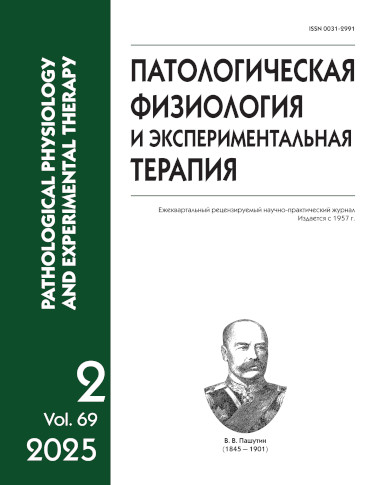Morphometric characteristics of hepatocyte cells of rat embryos during the exposure to titanium dioxide nanoparticles in the prenatal period of development
DOI:
https://doi.org/10.48612/pfiet/0031-2991.2025.02.70-78Keywords:
nanoparticle, titanium dioxide, liver, embryo, rat, hepatocyte, stellate macrophageAbstract
Introduction. The food supplement E171 (titanium dioxide, TiO2) is widely used in the food and paint industries as a white pigment due to its chemical stability. Previously considered safe, TiO2 in the form of nanoparticles (NPs) raises concerns due to its ability to penetrate biological barriers and accumulate in embryonic tissues, potentially leading to embryotoxic effects. Aim. To investigate the morphometric characteristics of liver cells in Wistar rat embryos when exposed to TiO2 NPs during the antenatal period. Methods. The TiO2 suspension was prepared using ultrasonic treatment in distilled water. The study included 12 female Wistar rats (weight 210-250 g) divided into the experimental (n=7) and control (n=5) groups. The experimental group was orally administered a suspension of rutile TiO2 NPs (particle size 30-50 nm) for 14 days prior to gestation and during pregnancy. The control group received a 0.9% NaCl solution. Euthanasia of the females was performed by intraperitoneal injection of chloral hydrate (400 mg/kg). Embryos (experimental group, 28; control group, 19) were isolated on the 15th and 20th days of gestation. The embryonic liver was fixed in 10% formalin, dehydrated, and embedded in paraffin. Sections (5 μm) were stained with hematoxylin and eosin. Morphometric analysis was conducted with a light microscope and the QuPath 0.5.1 software. Cell were counted in 10 fields of view (magnification ×100). Statistical analysis was performed using STATISTICA 13.5 with the Mann-Whitney test (p<0.05). Results. On the 15th day, no statistically significant differences in morphometric parameters were observed. On the 20th day, the experimental group showed an 18% reduction in hepatocyte count, a 20% decrease in their area, and a 372% increase in macrophage count (p<0,05). Hepatocyte apoptosis and macrophage infiltration were noted. Conclusion. Exposure to TiO2 NPs disrupts the liver development in embryos at later stages of gestation evident as a reduced hepatocyte count, altered morphometric characteristics, and increased macrophage infiltration, which indicated hepatotoxicity and potential risks to the developing organism.Downloads
Published
2025-06-18
Issue
Section
Original research
How to Cite
[1]
2025. Morphometric characteristics of hepatocyte cells of rat embryos during the exposure to titanium dioxide nanoparticles in the prenatal period of development. Patologicheskaya Fiziologiya i Eksperimental’naya Terapiya (Pathological physiology and experimental therapy). 69, 2 (Jun. 2025), 70–78. DOI:https://doi.org/10.48612/pfiet/0031-2991.2025.02.70-78.






